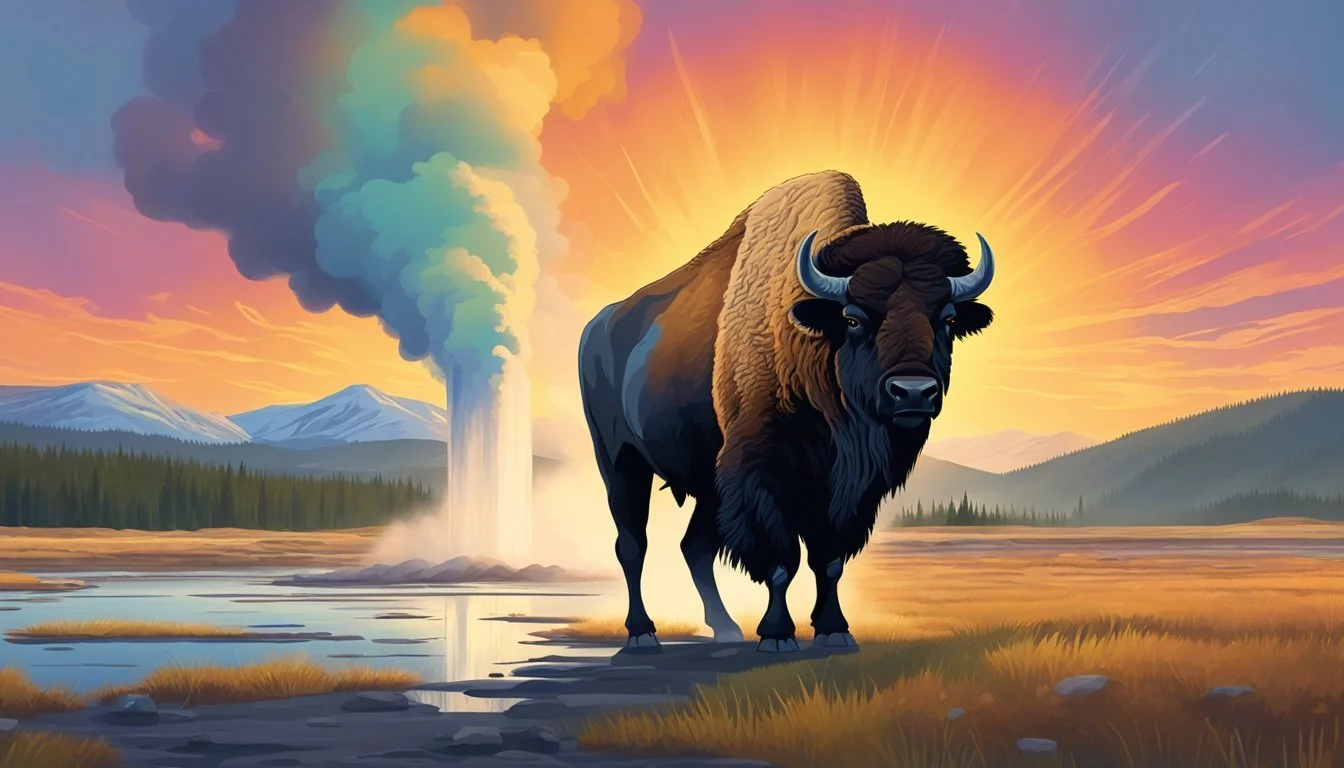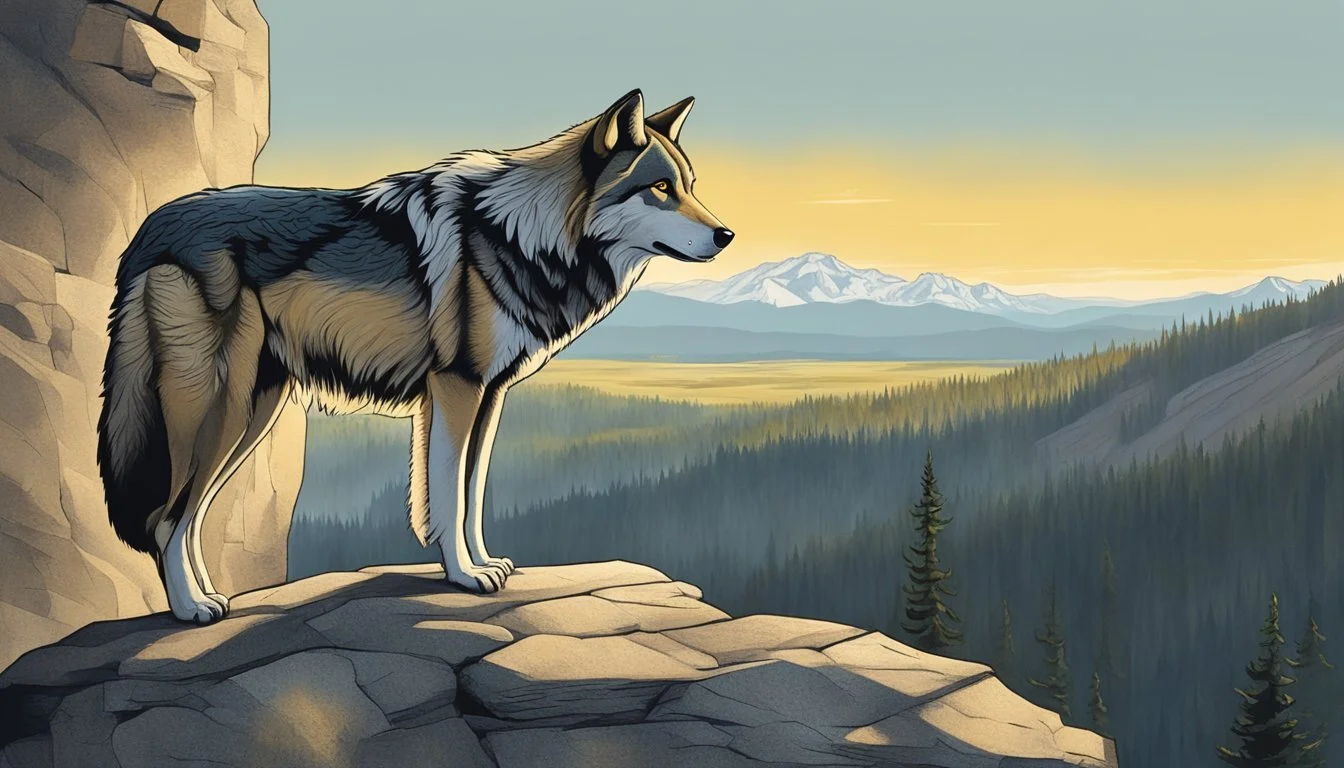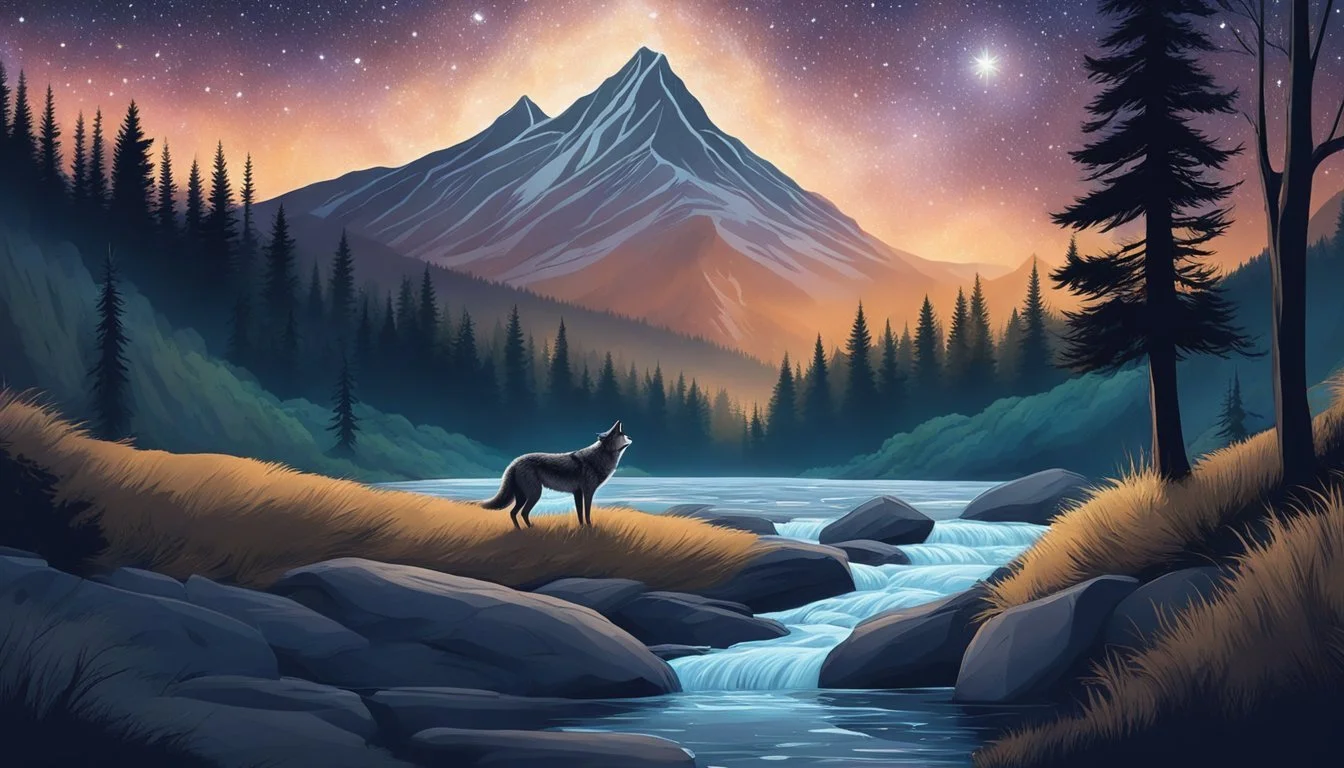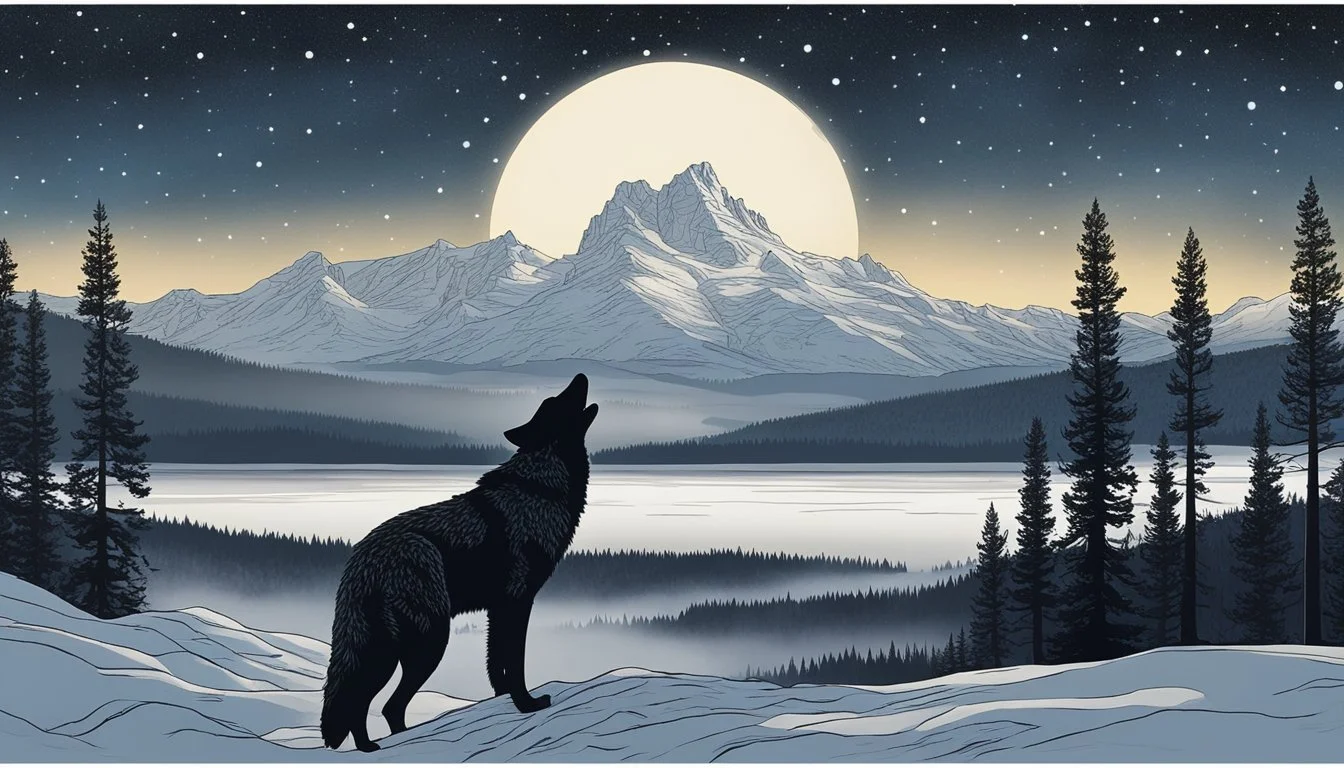Dreams and Visions: Their Narrative Significance in Yellowstone
Exploring Subconscious Themes in America's First National Park
Dreams and visions play a pivotal role in the narrative of Yellowstone, offering profound insights into characters' psyches and foreshadowing future events. The show's protagonist, Kayce Dutton, undergoes a transformative spiritual journey through a series of vivid visions during a Lakota ritual called Hanbleceya.
Kayce's visions provide a window into his inner turmoil and serve as a catalyst for crucial plot developments in the series. These symbolic experiences range from encounters with his deceased brother Lee to mysterious wolf sightings, each laden with potential meaning for Kayce's character arc and the broader storyline.
The interpretation of these dreams and visions adds an element of mystique to Yellowstone's plot, inviting viewers to speculate on their significance. As the show progresses, the impact of Kayce's spiritual quest ripples through the narrative, influencing his relationships and decisions in ways that promise to shape future seasons.
Cultural Context in 'Yellowstone'
Yellowstone weaves Native American influences and spiritual practices into its narrative, creating a rich tapestry of cultural elements. The show explores indigenous perspectives and rituals, particularly through its portrayal of the fictional Broken Rock Indian Reservation and its inhabitants.
Native American Influence
Yellowstone incorporates Native American culture throughout its storylines. The Broken Rock Indian Reservation plays a central role, serving as a counterpoint to the Dutton ranch. This fictional reservation represents the complex relationships between indigenous peoples and non-Native landowners in the American West.
Native characters like Thomas Rainwater and Monica Dutton provide authentic Native American perspectives. Their struggles and triumphs highlight issues faced by modern indigenous communities, including land rights, cultural preservation, and economic development.
The show also features traditional Native American practices, such as sweat lodge ceremonies and powwows. These elements add depth to the cultural landscape of Yellowstone and educate viewers about indigenous traditions.
The Significance of Visions in Indigenous Cultures
Visions hold profound importance in many Native American spiritual traditions. Yellowstone incorporates this aspect through characters experiencing spiritual revelations or prophetic dreams.
The Lakota practice of Hanbleceya, or "crying for a vision," is referenced in the series. This ritual involves seeking guidance through fasting and prayer, often in isolation. Characters like Kayce Dutton undergo vision quests that shape their character arcs and decisions.
These spiritual experiences serve as plot devices and provide insight into Native American worldviews. They highlight the interconnectedness of the physical and spiritual realms in indigenous belief systems.
Cultural Representation through Characters
Yellowstone's diverse cast allows for nuanced representation of Native American cultures. Characters from different tribal backgrounds showcase the diversity within indigenous communities.
Monica Dutton, a Native American teacher, bridges two worlds as she navigates life on and off the reservation. Her character explores themes of cultural identity and preservation in a modern context.
Thomas Rainwater, as chairman of the Broken Rock Reservation, embodies the complexities of tribal leadership. His character arc delves into the challenges of balancing tradition with progress and protecting Native interests in a changing world.
Supporting characters like Mo Brings Plenty provide additional depth to the show's portrayal of Native American life. Their presence ensures that indigenous perspectives are woven throughout the narrative, not relegated to isolated storylines.
Character Dissection
Dreams and visions play a pivotal role in shaping the characters of Yellowstone. They reveal hidden depths, drive personal growth, and influence key relationships within the Dutton family.
Kayce Dutton's Transformation
Kayce Dutton's vision quest marks a turning point in his character arc. The ritual, known as Hanbleceya, forces him to confront his past and glimpse potential futures. This experience challenges Kayce's perception of his place within the Dutton family and his wife's tribe.
Kayce's visions blend Native American spirituality with his own personal history. They highlight his internal struggle between loyalty to the Dutton ranch and his desire for a life with Monica.
The aftermath of these visions sets the stage for Kayce's evolving role in the family dynamics and his approach to leadership.
Monica Dutton's Role in Kayce's Visions
Monica Dutton, portrayed by Kelsey Asbille, serves as a crucial link between Kayce's two worlds. Her Native American heritage introduces Kayce to spiritual practices that lead to his transformative visions.
Monica's presence in Kayce's visions underscores the importance of their relationship. She represents a path diverging from the Dutton legacy, offering Kayce an alternative future.
Their bond is tested and strengthened through these shared experiences. Monica's understanding of the vision quest helps Kayce navigate its implications for their family.
John Dutton's Leadership and Legacy
John Dutton's influence looms large in the visions and dreams of his children. His leadership style and unwavering commitment to preserving the Dutton ranch shape the family's destiny.
Kayce's visions often reflect the weight of John's expectations. They reveal the complex father-son dynamic and Kayce's struggle to balance family duty with personal aspirations.
John's legacy impacts not only Kayce but also Jamie Dutton, influencing their choices and relationships. The visions highlight the far-reaching consequences of John's leadership on the next generation of Duttons.
Spiritual and Visionary Experiences in Yellowstone
Yellowstone explores profound spiritual themes through characters' encounters with the metaphysical. These experiences shape character development and drive key plot points throughout the series.
The Vision Quest and Its Purpose
Vision quests play a pivotal role in Yellowstone's narrative. Characters undertake these spiritual journeys to gain insight, guidance, and personal transformation. The Hanbleceya ritual, a sacred Indigenous practice, requires participants to spend time alone in nature, fasting and seeking visions.
This intense spiritual experience aims to connect individuals with their inner selves and the spirit world. Vision quests often occur at critical junctures in characters' lives, prompting important decisions or revealing hidden truths.
In Yellowstone, these rituals blend Indigenous traditions with contemporary storytelling, offering a unique perspective on personal growth and self-discovery.
Kayce's Haunting Visions
Kayce Dutton's vision quest in season 4 stands out as a pivotal moment in the series. During his three-day ordeal, Kayce encounters a series of vivid and unsettling visions that challenge his perceptions and hint at future events.
These visions include:
An encounter with his deceased brother, Lee
A romantic interaction with Avery
Glimpses of potential future paths
Kayce's visions blur the lines between past, present, and future, leaving him and viewers to interpret their significance. The experience profoundly affects Kayce, influencing his decisions and relationships in subsequent episodes.
His spiritual journey adds depth to his character and introduces an element of mysticism to the show's narrative.
Symbolic Animal Appearances
Animals hold significant symbolic meaning in Yellowstone's spiritual landscape. Wolf sightings, in particular, play a crucial role in Kayce's spiritual experiences. These encounters often precede or accompany important revelations or turning points in the story.
Other animals that appear as spirit guides or omens include:
Eagles
Horses
Bears
These animal appearances serve multiple narrative functions:
They connect characters to the natural world
They act as messengers from the spirit realm
They foreshadow future events or conflicts
The show's use of animal symbolism adds a layer of depth to its exploration of the characters' connections to the land and their ancestral heritage.
Plot Deciphering and Symbolism
Dreams and visions play a crucial role in Yellowstone's narrative, weaving intricate symbolism and driving key plot developments. These elements foreshadow events, shape character arcs, and explore the consequences of choices made by the Dutton family and their adversaries.
Foreshadowing and Symbolism of Visions
Visions in Yellowstone often serve as powerful foreshadowing devices. Characters experience vivid hallucinations that hint at future events or reveal hidden truths. These symbolic scenes frequently incorporate imagery of death, legacy, and the harsh landscape of Montana.
In the Season 4 finale, Beth's vision of her father's demise carries weight. It symbolizes the looming threat to John Dutton's life and the ranch's future. The vision's stark imagery - a blood-soaked field and circling vultures - represents the dangers closing in on the family.
Kayce's vision quest in the same episode reveals deep-seated fears and potential outcomes. His encounters with spiritual figures and ancestral memories offer glimpses into possible futures, blending Native American symbolism with the show's themes of family and land.
Vision-Driven Plotlines
Visions in Yellowstone often catalyze major plot developments. They push characters to make life-altering decisions and set new story arcs in motion. These ethereal experiences frequently challenge characters' beliefs and force them to confront their deepest fears.
Jamie's hallucinations of his biological father guide his actions throughout Season 4. These visions represent his internal struggle between nature and nurture, influencing his choices and relationships with the Duttons.
Monica's recurring dreams of tribal history and land loss drive her character's arc. They symbolize her connection to her heritage and fuel her determination to protect Native American interests against encroaching threats.
Choices and Consequences in the Narrative
The visions in Yellowstone often present characters with pivotal choices, each carrying significant consequences. These decisions shape the narrative and reveal character motivations and values.
John Dutton's near-death experience in earlier seasons influences his leadership style and priorities. His brush with mortality symbolizes the fragility of the Dutton legacy and drives his actions to secure the ranch's future.
Beth's nightmares about her past mistakes haunt her decisions. They represent her guilt and fuel her ruthless determination to protect the family, often leading to morally ambiguous choices.
Rip's rare moments of vulnerability, often triggered by memories or visions of Beth, illustrate the softer side of his character. These glimpses into his psyche contrast with his tough exterior and influence his loyalty to the Duttons.
Personal Conflicts and Relationships
The characters in Yellowstone navigate complex personal relationships fraught with conflict. Family loyalties clash with individual desires, while betrayals and infidelities threaten to tear apart marriages and alliances on the Dutton Ranch.
Family Ties and Sibling Rivalry
John Dutton's children struggle to balance familial obligations with their own ambitions. Kayce and Jamie often find themselves at odds, competing for their father's approval and control of the ranch. Beth's fierce protectiveness of the family frequently puts her in conflict with outsiders and her brothers alike.
The siblings' differing views on the ranch's future create ongoing tension. Jamie's political aspirations clash with the family's ranching legacy, while Kayce is torn between his duties to the Duttons and his life with Monica.
Betrayal and its Repercussions
Betrayal cuts deep in the world of Yellowstone. Jamie's revelation of his adoption and subsequent actions against the family in Season 3 and 4 fracture trust within the Dutton clan. His choices have far-reaching consequences, altering family dynamics and alliances.
Other characters face the fallout of disloyalty as well. Dan Jenkins' attempts to acquire Dutton land lead to bitter conflicts, while Roarke Morris' corporate maneuvering threatens the ranch's very existence.
Marriage Dynamics and Infidelity
Kayce and Monica's relationship faces numerous challenges throughout the series. Their marriage is tested by cultural differences, family obligations, and the dangers of Kayce's work. Infidelity becomes a point of contention, straining their bond.
John Dutton's own romantic entanglements, including his relationship with Governor Lynelle Perry, add complexity to the family's personal and political connections. These liaisons often blur the lines between personal affection and strategic alliances.
Protector and Protectorate Relationships
The concept of protection is central to many relationships in Yellowstone. John Dutton fiercely guards his land and legacy, often at great personal cost. Rip Wheeler's unwavering loyalty to the Duttons stems from John's protection of him as a youth.
Kayce's role as a livestock agent puts him in the position of protector for both his family and the wider ranching community. This duty frequently conflicts with his personal relationships and moral code.
Beth's protective instincts towards her father and the ranch drive many of her actions, leading to both triumphs and conflicts. Her relationship with Rip is built on a foundation of mutual protection and understanding.
"Yellowstone" and Contemporary Issues
"Yellowstone" tackles pressing modern concerns through its narrative, exploring land rights, corporate influence, and Native American experiences. The show's portrayal of these issues reflects real-world tensions in the American West.
Land Ownership and Corporate Interference
Market Equities emerges as a formidable antagonist in "Yellowstone," representing corporate interests seeking to exploit Montana's natural resources. The company's efforts to acquire land for development create conflict with the Dutton family and local communities.
This storyline mirrors actual disputes over land use in the Western United States. It highlights the struggle between preserving traditional ways of life and embracing economic development.
The show depicts the complex legal and ethical questions surrounding eminent domain and corporate influence in local politics. These elements resonate with viewers familiar with similar real-world battles.
Reflections on Modern Native American Life
"Yellowstone" offers a nuanced portrayal of contemporary Native American experiences through characters like Chief Rainwater and the Broken Rock Reservation community.
The series explores the ongoing fight for tribal sovereignty and land rights. It shows how Native communities navigate relationships with state and federal governments.
Cultural preservation efforts are depicted alongside modern challenges. The show touches on issues like economic development on reservations and the impact of casino operations.
"Yellowstone" also addresses the historical trauma and present-day discrimination faced by Native Americans. It presents characters striving to balance traditional values with the demands of the modern world.
Economic Factors Influencing Characters' Lives
The economic landscape of Montana plays a crucial role in shaping characters' motivations and actions. Ranching is portrayed as a financially precarious venture, vulnerable to market forces and environmental challenges.
Tourism's impact on local economies is explored, showing both its benefits and drawbacks. The influx of wealthy outsiders buying up land creates tension with long-time residents.
The show highlights income inequality in rural areas. It contrasts the struggles of working-class characters with the lifestyle of the wealthy Dutton family.
"Yellowstone" also touches on the allure of lucrative but potentially exploitative industries like oil and gas. Characters grapple with ethical dilemmas as they seek financial stability.






